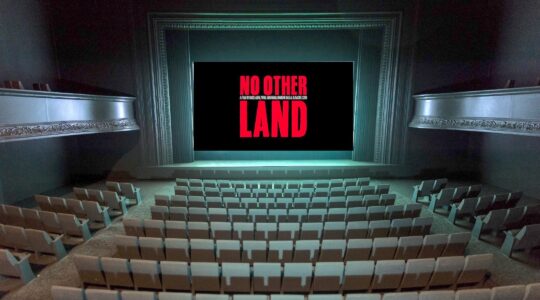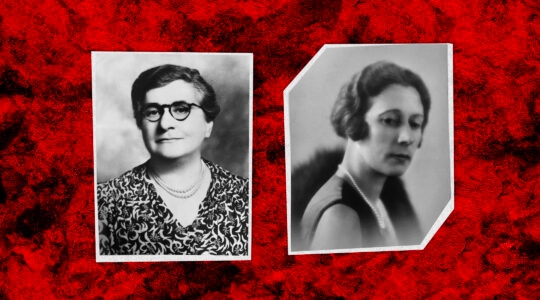When it comes to hardware stores, count me as a One-Day-A-Year Jew — and that day is comes around just before the holiday of Sukkot, when over the years I would struggle to put up our family sukkah in the backyard. Thank God it only has to stand for eight days.
Part of the wonderful rhythm of the High Holy Days season is that we go directly from the cerebral solemnity of Rosh HaShanah and Yom Kippur to the hands-on, harvest-inspired, outdoor-focused festival of Sukkot, recalling the wanderings of the ancient Israelites in the desert those 40 long years.
When I would make my annual pilgrimage to the hardware store, I’d get a kick out of seeing pale, scholarly Jewish young men in traditional garb roaming around the aisles, inquiring about hammers and brackets and mollies with the same intensity as if they were grappling with a portion of the Talmud. It’s as if the Lord is telling us, there’s more to life than praying inside all day; get thee out there and sweat a little.
Some men remember fondly every car they’ve owned. I can get misty about every sukkah in my life, dating back to the one we had on our tiny back porch when I was growing up in Annapolis, Md. Even though there was barely room for a card table and four chairs inside its wooden walls, the non-Jewish kids in the neighborhood love playing in my “fort” and no doubt begged their fathers to build them one, too.
The first sukkah I built myself was when we lived in Baltimore and it was a disaster. It was made out of canvas, which I bought from a boating store within walking distance of the Baltimore harbor. When the elderly, leather-skinned salesman in the fisherman’s cap asked me the size of my jib, I was ready to call a cop. I tried to explain that the canvas I was interested in wasn’t actually for my boat but for the “ritual booth” I was building in my backyard. Then he looked like HE was going to call a cop.
We came to some sort of understanding, finally, but a strong storm on the first night of the holiday left our sukkah looking like the Titanic. We had to eat our meals in friends’ sukkahs that year.
My misfortune wasn’t limited to my own family that Sukkot. A colleague at the Baltimore Jewish Times had suggested before the holiday that, as a service to our readers, we publish a simple plan, complete with diagram, of how to build a sukkah. It seemed like a lovely idea, and since her husband was building one, she volunteered to write up the plan.
I got a sinking feeling, though, when she came to work after the first two days of the holiday and reported that their sukkah had not survived the storm either. When the phone calls started coming into the office, complaining that our sukkah plan was a flop, I was tempted to tell callers the story about the man who wanted to build a house according to Jewish law.
It seems that none of the rabbis this man approached could find a Judaic text outlining precisely what materials to use and which measurements were appropriate. Finally, he came upon an elderly Talmudic scholar who said he had found an obscure Aramaic tome that did, indeed, instruct exactly how to build a house.
The man was delighted and spent the next six years personally building his home. But on the very first night after he had moved in, it collapsed. Distraught, he ran to the rabbi. “I spent six years building my house according to Jewish law. Why did it cave in the very first night?” he demanded.
The rabbi thought a moment, stroked his beard and replied, “Interesting … Rashi [the Talmudic commentator] asks the very same question.”
In any event, the year after the storm I was smart enough to commission a cousin, who later became an engineer, to build us a sturdy wooden sukkah that lasted at least 15 years. During that time, and since, we often enjoyed the social and communal benefits of inviting friends and family for holiday meals in the sukkah.
Each sukkah conveys the delicate balance between material protection and the need for God’s shelter. A sukkah has walls and a roof, but the roof must be open enough to see through it. Perhaps that’s why there’s an extra resonance to the sound of traditional holiday songs sung while sitting outside and a special quality to seeing the stars through the wooden slats of the roof. We see our breath on cold nights and feel the rain come through at times, reminding us of our place in the world and how vulnerable we are to Divine Nature.
Sukkot is also a time for memory and mysticism. There’s a charming holiday custom known as Ushpizin (“guests”), in which we symbolically welcome into our sukkah each evening one of seven illustrious visitors: Abraham, Isaac, Jacob, Joseph, Moses, Aaron and King David. As we sit in the sukkah each evening of the holiday, we can feel the presence, as well, of loved ones who are no longer with us, who we’ve shared a sukkah with, and whose influence on our lives still shines as clearly as the stars above us. It makes us sit a bit closer, raise our voices a bit stronger and appreciate sharing a tradition as old as our people.
Chag sameach.
A slightly different version of this column first appeared here 20 years ago, on Sukkot 1994.
The New York Jewish Week brings you the stories behind the headlines, keeping you connected to Jewish life in New York. Help sustain the reporting you trust by donating today.





